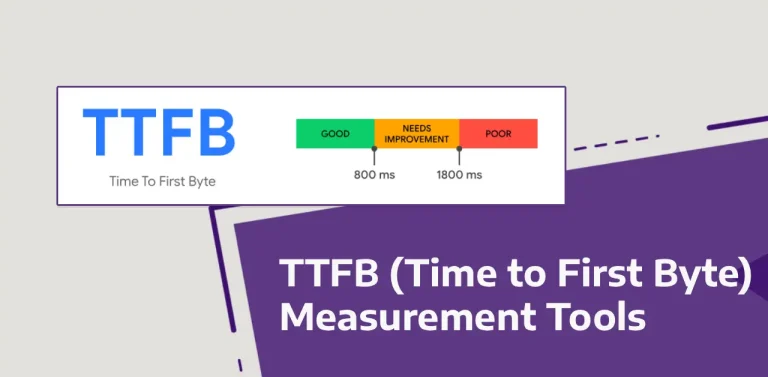Can’t copy or select text on some web pages?
Yes, some websites don’t allow you to copy text because they utilize technical strategies. Website owners usually don’t follow these tactics for UX reasons.
However, some content owners try to protect their content from copycats. The truth is that even some popular websites use copied content and rank well.
There are several ways to protect content and disable right-click. WordPress offers numerous plugins for this purpose, and web hosting and CDNs provide features such as server-side exclusions and link protection.
However, using content protection strategies can negatively impact the user experience. Anyway, below, let’s explore how to copy text from protected (right-click-disabled) websites.
Keep in mind: If you copy content from a restricted site without permission, you are probably violating the copyright. Remember to respect the rights to digital property and adhere to the creator's regulations. You need permission to use text or content. Use content only with permission, and read the terms.
1. Extracting Text From Images
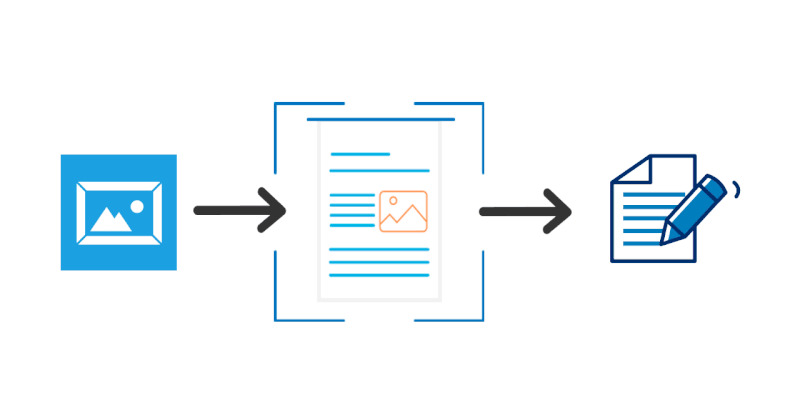
With optical text recognition, you can easily convert images into text. This strategy is my top pick because it’s beginner-friendly.
Take a screenshot of the text part you want to copy from a protected website and convert it into plain text, PDF, DOC, or other formats using online optical character recognition (OCR) tools.
Here’s an example. I took a screenshot of the text from a content protected website. And, Onlineocr offers an easy-to-use OCR with just a few steps.

So, I’m going to upload my screenshot to it. There are options and languages, but you should pick the correct language. Output formats include docs, Excel files, and plain text. I chose plain text, and it finished in 10 seconds, exactly what I wanted.
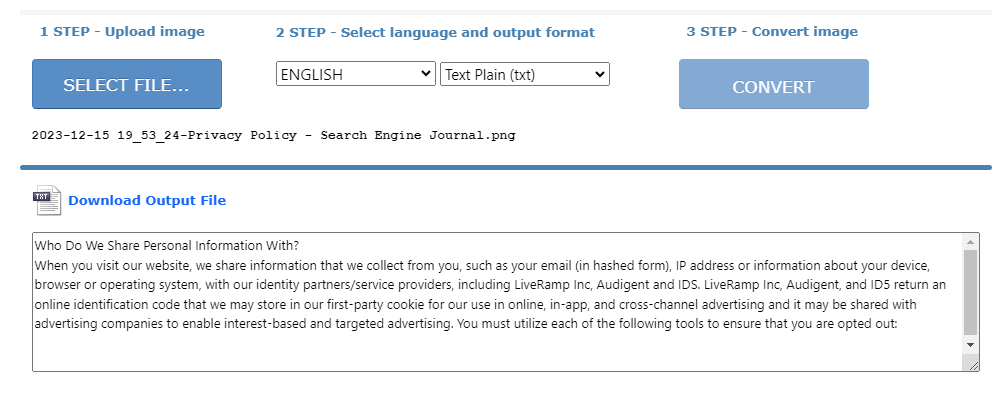
There are only four steps: upload, set the language, convert, and download. That’s why I said this is a beginner-friendly approach. It is pretty fast. In addition, search Google or others for “OCR tools.” And you can find plenty of OCRs.
In fact, they convert images to text with optical character recognition. Or… You can do this type of stuff with Google Cloud AI Optical Character Recognition.
With most browsers, you can access the online OCR to copy text from restricted websites easily. You can extract characters from PDFs/images without installing apps. It’s beginner-friendly, which is why I put it first. Now, let’s explore other methods.
2. Installing Google Chrome Extensions
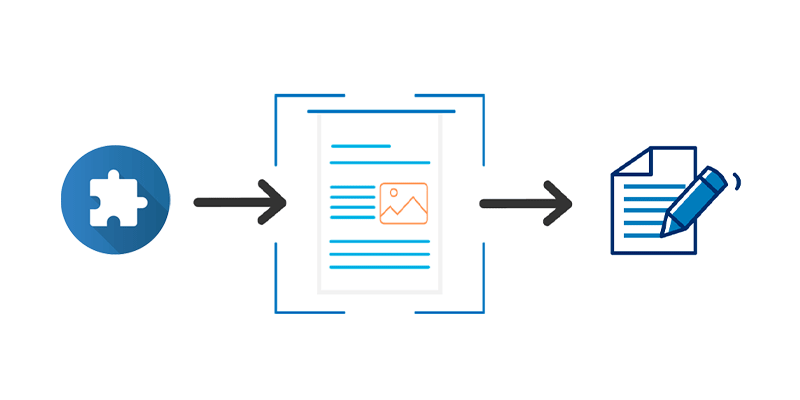
Everyone uses a web browser, and Chrome is the most popular (over 2 billion users). You can copy text from web pages using Chrome in multiple ways.
Could a Chrome extension be used to copy text from protected websites?
The simple answer is YES. It’s not difficult. Some Chrome extensions allow you to copy text from protected websites. I’ve tested a few, and most of them work.
I’ll show you some basic ones. Allow Copy Select & Enable Right Click is a popular Chrome extension with over 100K users. That’s totally fine; it lets you enable context menus on restricted websites and copy options on all pages (even when a website doesn’t allow right-clicking).

I’m going to test this add-on on a website that doesn’t allow right-clicks. I can’t use shortcuts or drag images with this page, so I’ve installed the “Allow Copy” extension and enabled the option “Enable Copy.” It works; you can see it here:
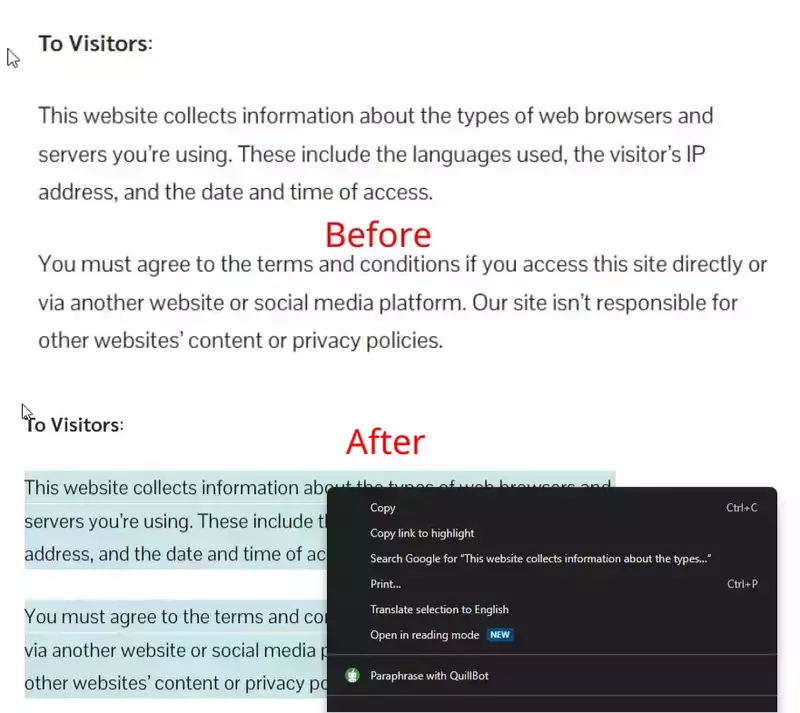
If you don’t like the first one, consider Enable Right-Click, another fine extension that works independently in each tab. It has received many positive reviews. The Google Chrome store offers many extensions that enable users to copy text from protected websites and save images from content-protected sites. We’ll discuss some steps…
3. Utilizing Reading Mode In Browsers
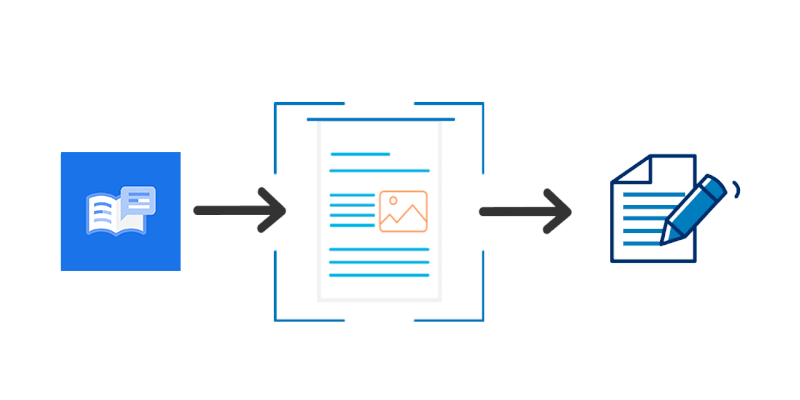
Before doing these things, clear the CDN and browser cache. In most browsers, you can use read mode, a handy feature that allows you to copy text from secure web pages. I’ll show you how to use read mode in each browser.
Google Chrome

Chrome’s latest version comes with reading mode by default. You can use it by right-clicking and selecting “open in reading mode.”.
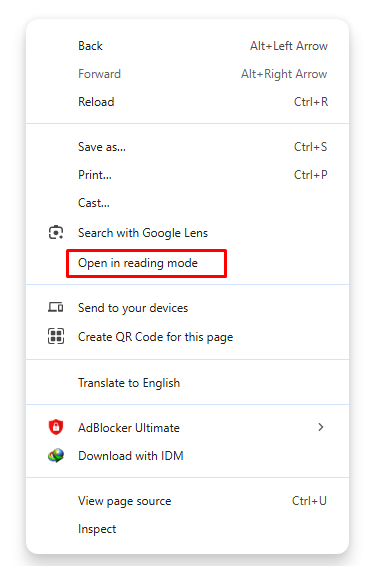
You can customize Chrome’s reading mode with fonts, colors, and more, but you can’t always count on this approach.
It isn’t perfect. Things can go wrong; sometimes this won’t work if a website turns off right-click. Some webpages don’t allow you to copy content, but you can still right-click it. If so, use Chrome reading mode to copy text from protected websites.
Mozilla Firefox

I’ve copied text from several protected websites using Firefox, but I don’t feel comfortable using Firefox as my primary browser.
The default read mode in Firefox makes it easy to navigate even content-protected pages. So, you can open Firefox reading mode by pressing the “F9” shortcut key on the keyboard or from the address bar icon. Here’s a screenshot:
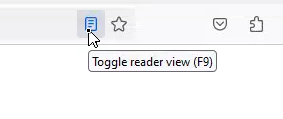
You can usually use read mode in Firefox without an extension to copy text from content-blocked websites. Occasionally, it doesn’t work because in WordPress and other CMSs, some security and cache plugins implement text protection strategies.
Microsoft Edge

Press the “F9” shortcut on the keyboard to open Microsoft Edge reading mode. You can access it by clicking on the icon in the address bar that indicates it.
A handy feature that doesn’t require extensions. See how easy it is…

MS Edge is a popular browser that has made significant progress over the past few years. Like Mozilla Firefox, it has a practical reading mode and allows you to copy text from any restricted website.
Anyway, here’s an image showing how I open reading mode with Edge when the website is right-click disabled:
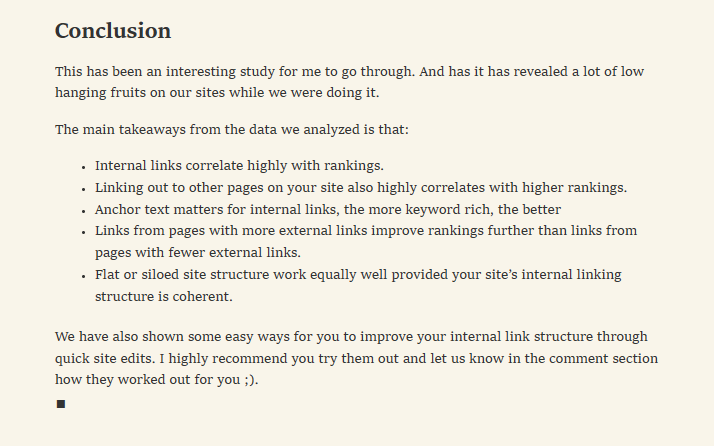
In my experience, this method works well for all kinds of websites that disable right-click functionality. If not, let’s explore other options.
Opera

Opera browser has a smaller user base than Chrome and Safari. But it is smooth and customizable, making it an attractive alternative to them. It’s got many features, and Opera’s “Read Mode” is as good as Firefox and MS Edge.
Once you are on the website where you want to copy text, you should see the reader mode icon in the address bar. Click it to customize it.
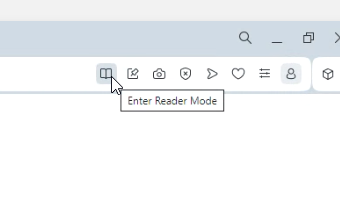
Therefore, I can’t list all web browsers and how to copy text from protected web pages, as there are many. Your browser usually has a reader mode or extension. Safari is a popular browser (Read more about reader view in this Safari user guide).
4. With The Page Source Code
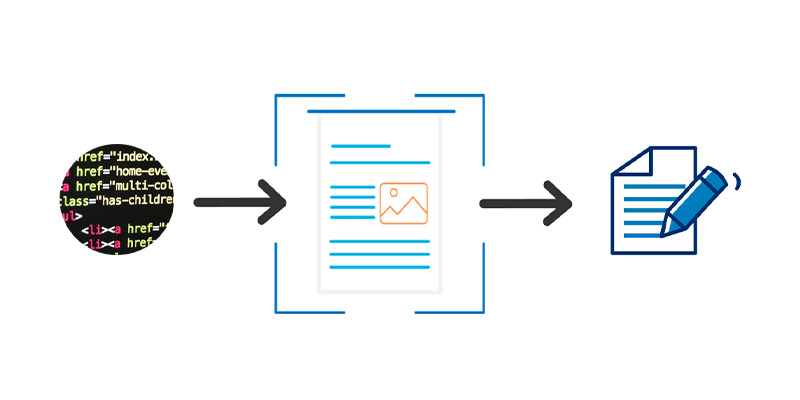
Note that I recommend this only if you’re familiar with HTML. You get a little technical with this stuff. So, this isn’t a tactic to use often.
In many browsers, you can view the source code of a page. If you use Chrome, visit the page where you want to copy the text. Okay, first things first… To view the page source, right-click on that page and tap “View Page Source or use Ctrl + U.
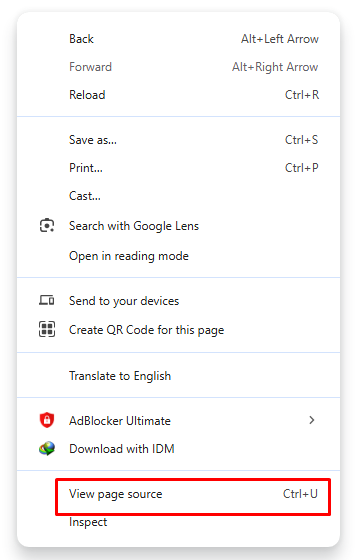
And indeed, you’ll see something like this:
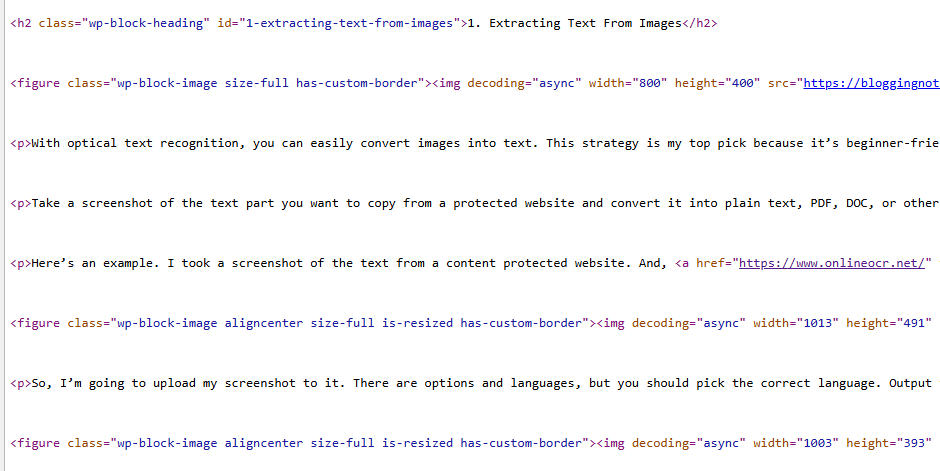
Users can scroll down to navigate content on some websites, and they can use the right side of the webpage. When you peer at the source code of a page, recognize content with “P” for paragraphs and “H” for headings. See an example here:
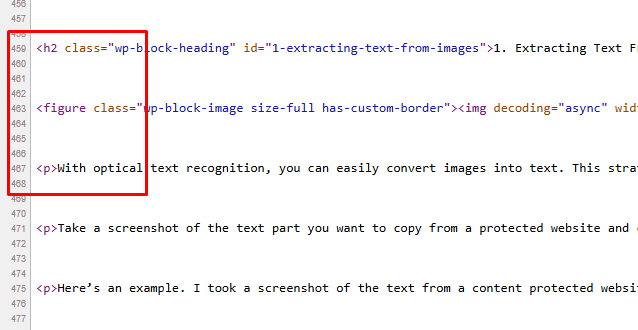
Some add-ons can disable source code views; this won’t work if the content utilizes those approaches. See how to open Page Source Code in other browsers:
- Firefox: This is an open-source web browser. Press the Ctrl+U key on your keyboard or right-click on the page and opt for ” View Source. “
- Edge: The Approach is the same as Microsoft Edge. Select Inspect Element by right-clicking on the page (Ctrl+U also works).
- Opera: Press “Ctrl+U” on your device to open the selected page’s source code. Or click on the right-click menu and choose “page source.”
- Safari: Click “Develop” in the menu bar, then select Show Page Source—Web Inspector from the options menu.
- Brave/Vivaldi/Tor: Right-click to view the source or press Ctrl+U.
With the above methods, you can view the text, scripts, and other elements of the webpage in your web browser.
And you can copy text from websites using the page source, but that’s not always the proper way. It’s barred on some, but you can try it if other methods don’t work.
5. Using The Browser’s Print Feature
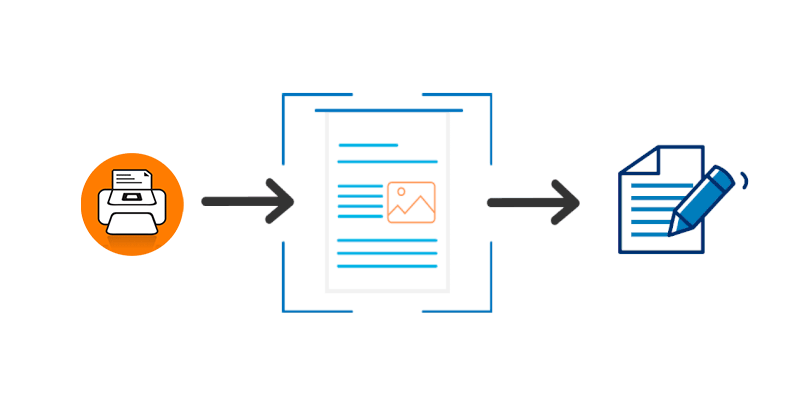
Browsers usually have a printing feature; otherwise, you can convert a page to a PDF. This method can also extract text from secure web pages; however, add-ons are available to restrict the Print-PDF feature.
I’ve had good results with Firefox and Edge using this approach. Most of the time, Chrome’s Print-PDF feature works well, but not all websites support it.
So, what are the steps involved?
- When the right-click isn’t disabled, right-click and click Print.
- If right-clicking isn’t working, use the shortcut key “Ctrl+P” to open the PDF feature with any web browser.
Okay, here’s a practical example (Access to certain content on this site is restricted).
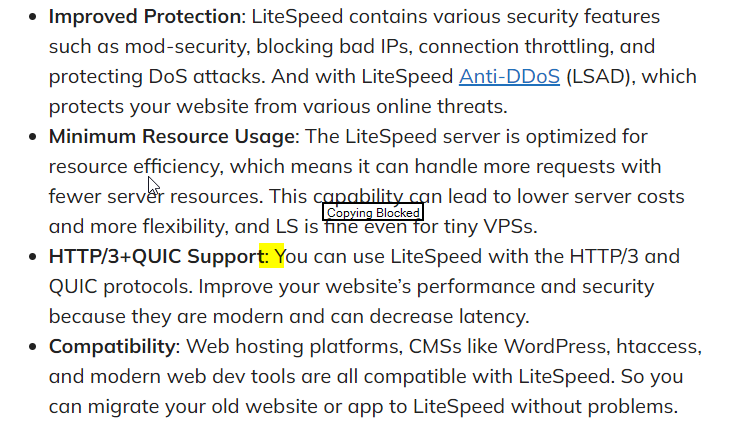
So, I’m going to convert this page to a PDF document using Chrome.
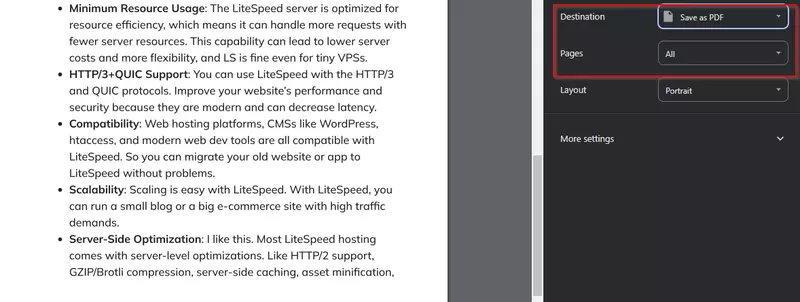
The method allows you to download the PDF file to your PC or save it as a PDF, but I recommend the previous techniques for copying a specific text part.
6. Using Save The Web Page
Some websites don’t disable right-clicking; however, you can’t copy text. You can then use the feature to save the web page. In most browsers, you can save the page to your device by pressing Ctrl+S. You can see it as ‘Save as’ in Chrome.
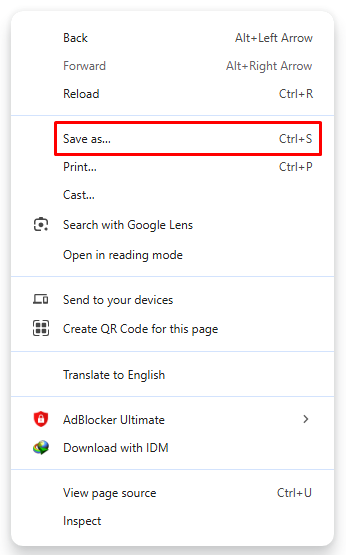
By doing this, you can download the entire page, including images, CSS, and other elements. In other words, it’s a copy of the page for offline viewing. If it works, open the file in any browser to view the content. In some browsers, it’s just an HTML file; media and other resources won’t be saved. It may appear to be broken. However, if it is successful, it is a simple way to copy content from locked web pages.
Final Thoughts
OK, friends. I think you’ve found the answer to copying content from protected websites. Those strategies may be helpful for legitimate reasons. Each approach is different. And there are likely other methods, but most of the ones above are straightforward. Easy to unlock, click, select, and copy features on any website.
You can use them without much hassle, even as a beginner. Numerous content protection methods are outlined in the WordPress documentation.
Let’s be honest… copying text from protected websites is like sneaking a peek at your birthday presents before the day. Websites lock their content for a reason.
Try getting creative if you find yourself copying and pasting. It’s ridiculous to take original content, change the wording, and publish it without crediting the author. (Give credit to the creator, too.)
More: Getting Back Hacked TikTok Accounts | TTFB Measurement Tools


